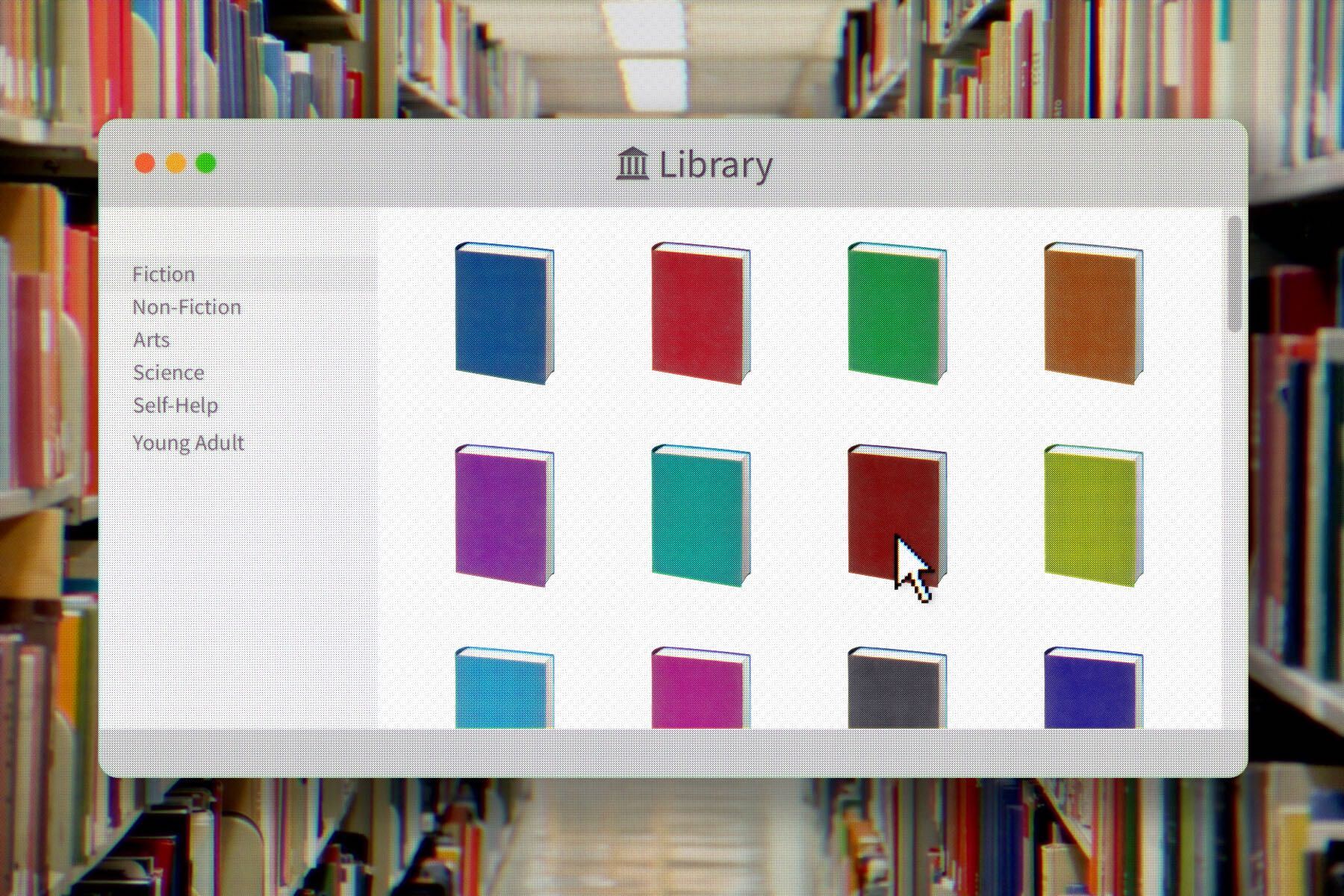In “Church Going”—Philip Larkin’s 1955 poem on the fade-out of religious faith in the modern world—the narrator wonders why, despite his own apathy and ignorance, he keeps visiting churches. Bicycling on Sunday afternoons, he finds himself “tending to this cross of ground,” even as he recognizes they no longer have the power to hold “unspilt . . . what since is found / Only in separation.” Looking forward, he wonders “when churches will fall completely out of use / What we shall turn them into,” imagining most of them slowly crumbling to ruin amid rain and sheep, with only “a few cathedrals” kept “chronically on show.” The poem ends as he tries to foresee “who / Will be the last, the very last,” to seek a church “for what it was,” the final representative of beliefs wedded to practices within “the special shell” created to house them.
Larkin’s poem has been coming to mind lately as I visit libraries, and I’ve begun to wonder to what extent my interactions with them and their contents are becoming anomalous, a twilit posture. Many institutions have moved, or are on the verge of moving, significant portions of their collections off-site. Some are embarking on large-scale book de-accessioning projects, a process by which books are removed permanently from a collection. Across North America, academic library buildings themselves are being reconfigured as “information hubs” and “learning spaces.”
Going forward, what will be the claim of printed materials on our resources, our scholarship, and our imaginations?
When I first heard about the “managing down” of print collections, I felt it with the force of scandal. I had learned and become a scholar among legacy print collections and had imbibed a great reverence for the stacks. Bibliography and librarianship were closely intertwined disciplines in my understanding. Like many of my colleagues in English and other humanities departments, I had assumed that the books, so long the primary establishing feature of our research library, weren’t going anywhere.
I thought that the large-scale withdrawal of support from print was coming from the fringes or from corporate-efficiency thought leaders and that these ideas would surely be resisted by librarians and faculty members acting together. Finally, I was driven by the belief that, because disagreements about the value of the print collections depended on a relatively simple misunderstanding about the evidence that books contain and the research operations they enable, the issues could easily be resolved through a few influential conversations among the stakeholders.
It turns out that almost none of that is true. Indeed, the downsizing of print collections has emerged from, and has been nurtured by, academic library policy circles all along. As the global library co-operative Online Computer Library Center (OCLC) states on its website, “many libraries are already managing down their local print collections with OCLC’s help.” It is now a commonplace in the library literature that “many libraries are undertaking massive book deselection projects.” The digital vendor ProQuest recently announced “that out of more than 400 librarians surveyed, 78 percent of the respondents reported that they are deselecting print book collections” to reclaim library space for other purposes.
The motivations for these reductions are obvious: the usage rate of non-rare physical library collections is down everywhere, and tight budgets are increasingly being directed to digital resources. Students and faculty want spaces to work and collaborate, but such sessions don’t, as often, call for many physical books. The availability of digital texts and digitally gathered data about collections has made printed books newly manageable, more reorganizable at scale. And, since it has been calculated that every book retained by a library costs between one and four dollars per year to store and circulate, management has tended toward reductions.
Objections to the downsizing of print collections have been raised, most visibly by faculty and students who fear the loss of research capacity at their institutions. But these have generally been rearguard operations, sometimes successful in slowing the movement of books from the shelves but only glancingly effective on the larger shared print movement and the tenets that underlie it.
Further, such protests often seem to deepen lines of division. Any conversation about book removal tends to be polarizing, with the library pushed into defensive postures from which they react by labelling attempts to save books “sentimental,” “exaggerated,” and “nostalgic.” For example, Nicholson Baker’s Double Fold: Libraries and the Assault on Paper (2001) offered a trenchant but, at times, overly polemical critique of libraries’ de-accessioning of print in the name of progress. Baker’s analysis was taken seriously, if warily, by library and archivist communities at the time, but they were also put on the defensive by his rhetoric. As years passed, Double Fold was remembered by the library community as an eccentric and ultimately nostalgic call to save everything.
Certainly, “save everything” is not a responsible directive. Librarians have always weeded stacks. But the core of Baker’s arguments cannot be easily dismissed. Nor can sentiment and nostalgia be brushed aside, given the involvement of those attitudes with the culture of the book and their salutary resistance to the techno-futurism of our society. Baker correctly and presciently described the technologically driven discarding of print in favour of more efficient but inadequate surrogates, like microfilm and digital scans. He is against an ideology of substitution that can drive the wholesale removal of historical material in the name of convenience. Since the new millennium, massive digitization programs have pushed many libraries toward just such a systemic transformation, whereby entire classes of materials are either being moved off-site or being discarded.
Deselection has always been part of the process of maintaining a healthy library system. But librarians are now proposing a new vision of that system. In 2014, David Woolwine stated plainly, “Academic libraries are in a transitional period to what will, most likely, become almost entirely electronic collections.” As Robert Kieft and Lizanne Payne envision it, the “ideal state for academic library print collections” in this decade is one in which the vast majority of campuses devote “much less of their on-campus space to housing general collection print materials in open stacks” and instead working with other libraries “to maintain a relatively small number of print copies for use by everyone.” Along the same lines, a 2010 report from OCLC concludes that “it is in the interest of all academic libraries that mass-digitized collections . . . be retired in favor of increased reliance on digital surrogate[s].”
That is more than just weeding: it sounds like a clear-cutting of old-growth collections.
To be sure, many individual librarians fiercely defend legacy print collections, devoting their careers to the preservation of the books on the shelves, and some institutions will attempt strong commitments to keeping their legacy physical collections intact and accessible. But, at higher levels of policy and administration, the new normal is well underway: a significant reduction in printed books in many academic libraries.
Lost in all this an important truth: a library collection is not a random assortment of old books. It has been shaped by professionals—librarians and faculty working together over generations—as well as by collectors and donors, students and researchers, coincidence and accident, happy acquisitions and unintended losses. As the editor and critic Alberto Manguel writes, while “the Chief Librarian is always ultimately Chance,” order persists. A collection contains layers of overlapping coherence, determined by various priorities, policies, and bequests over time. The books, then, are a primary index of the history of the institution and its local reading communities. The provenance of the volumes is part of their significance for scholarly research, particularly with regard to the older volumes. The complex origins and orders of a legacy collection cannot be replicated via interlibrary loans of alternate copies. Nor can that collection be replaced by Google Book scans (of items from different collections) or other forms of electronic access to a single scanned copy.
One glaring problem with libraries’ increasing their reliance on digital texts is the relatively large number of errors in the Google Books corpus. As archivist Paul Conway has shown, “the imperfection of digital surrogates is an obvious and nearly ubiquitous feature of Google Books.” But, even overlooking the outright errors in the scanned pages, my point is that “content”—what books contain—goes far beyond words in a particular order and beyond page images of a single representative copy. As we detach texts from books, we enable a certain range of procedures while disabling others. Online editions can offer up texts for investigation and discovery, but they are not replacements for the material they represent. This is obvious for rare books and manuscripts, which would never be discarded just because someone scanned them and put those images online. But in the realm of the medium-rare nineteenth-century book, digitization is being used as a predicate for declaring “redundant copies” obsolete.
Academic and research libraries have long taken the preservation of the historically layered material record as their premier duty, but priorities are changing. To keep the books, librarians and humanities faculty and students will need to find common ground from which to articulate the ongoing value of the print collections and to demand more resources for their preservation. Libraries have to focus in part on present needs and innovation: how to keep the lights on, to satisfy user demands, and to adapt to new technologies.
But libraries are also our guardians of the past—that is, of the textual humanities. Museum-labs of the printed cultural record, they have a fiduciary responsibility to their historic collections that cannot be reconstituted elsewhere. National library collections carry not only the history of a country but also the record of the collective archiving of that history. Library print collections are the ever-evolving result of decisions and chance events. It is certainly true that they reflect the inequalities of the culture of their making, but they have a historical integrity as an archive of what we gathered and what we knew. Both directly and inadvertently, for better and worse, old shelves tell stories we need to hear. Moreover, future generations will need to know that we heard them, in all of their specific details.
I am brought back, then, to Larkin, who calls the church “a serious house on serious earth . . . / In whose blent air all our compulsions meet” and who concludes that we will always need such places in ways that transcend their apparent utility. In the modern university, the book-filled library can never be obsolete. Rather, it is, as Manguel says, an “essential need.” Even if the twenty-first century student never opens many of the books, she learns from their variegated physical presence something about the passions and triumphs, the farces and tragedies consequent upon the pursuit of knowledge and the circulation of embodied forms. And, with that, with the books before her, she can begin her serious life. I think of those many nineteenth-century books on the shelves and of their momentarily audible voices and imagine a student, perhaps initially uninformed, who may find herself tending and attending to them, becoming a patron at last. As Larkin concludes,
Since someone will forever be surprising
A hunger in himself to be more serious,
And gravitating with it to this ground,
Which, he once heard, was proper to grow wise in,
If only that so many dead lie round.
Adapted from “Serious House: On the Future of Print Library Collections,” by Andrew Stauffer, in Unpacking the Personal Library: The Public and Private Life of Books, edited by Jason Camlot and J. A. Weingarten (WLU Press, 2022). This chapter was originally published in slightly different form in Book Traces: Nineteenth-Century Readers and the Future of the Library, by Andrew M. Stauffer (UPenn Press, 2021). Reprinted with the permission of Wilfrid Laurier University Press and University of Pennsylvania Press.






